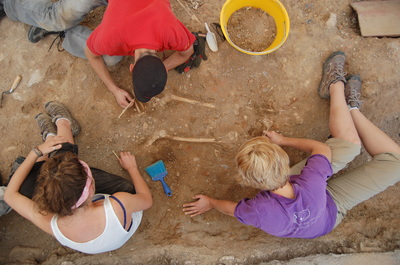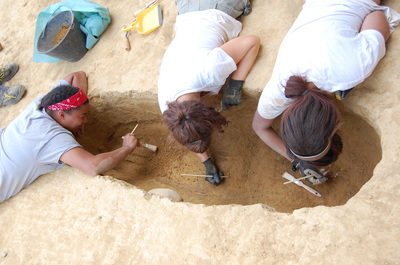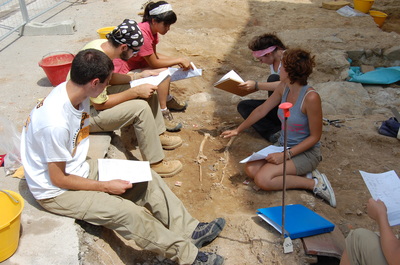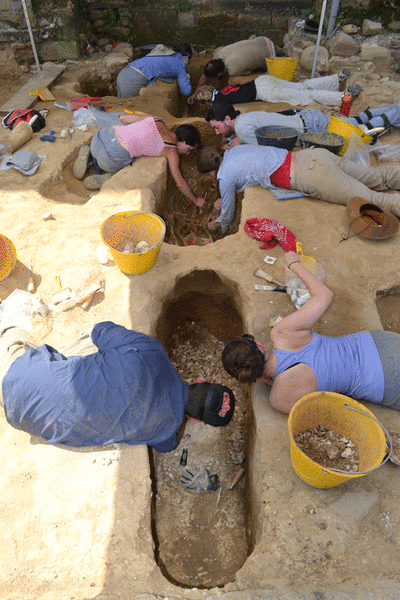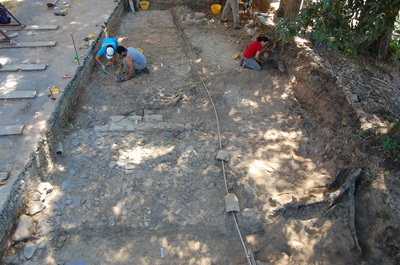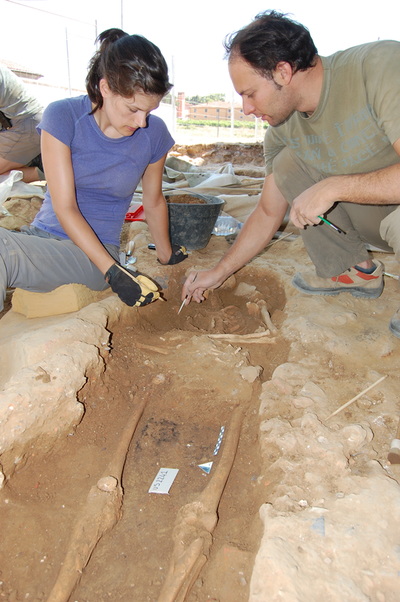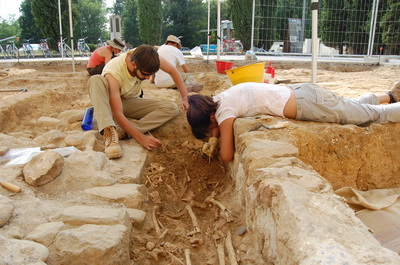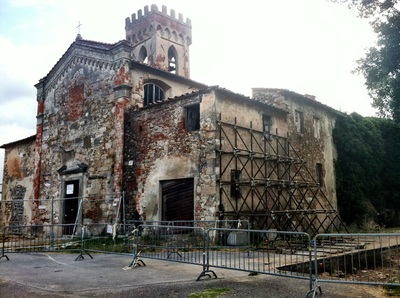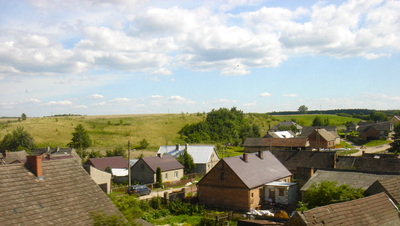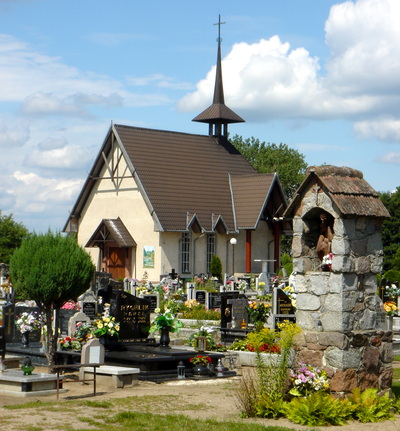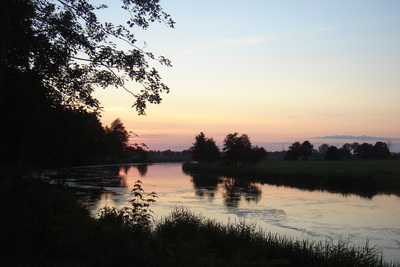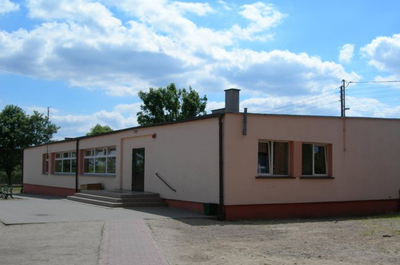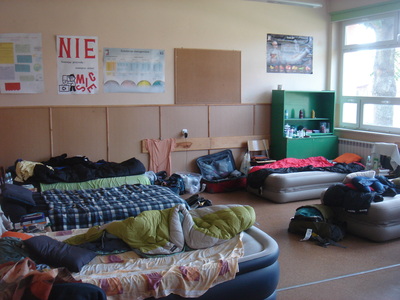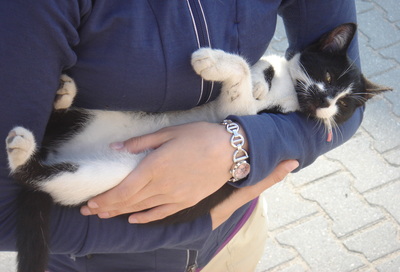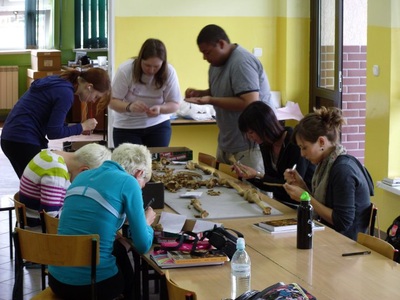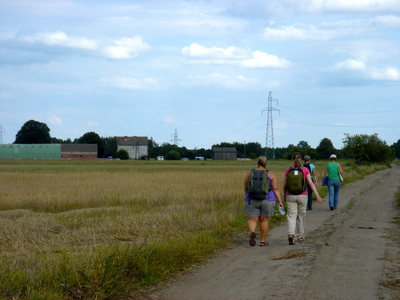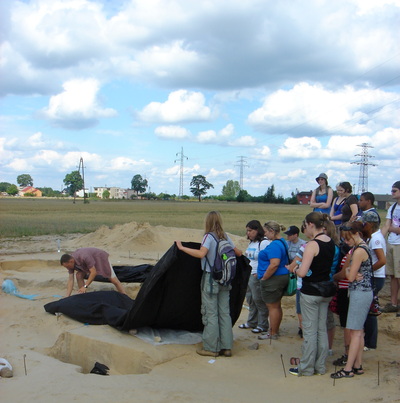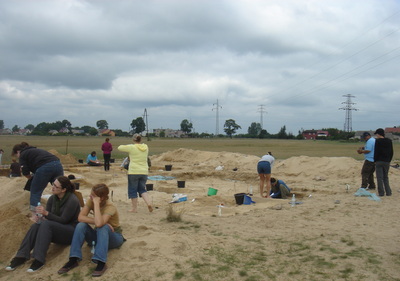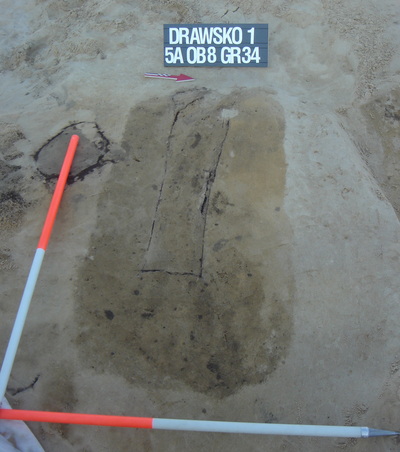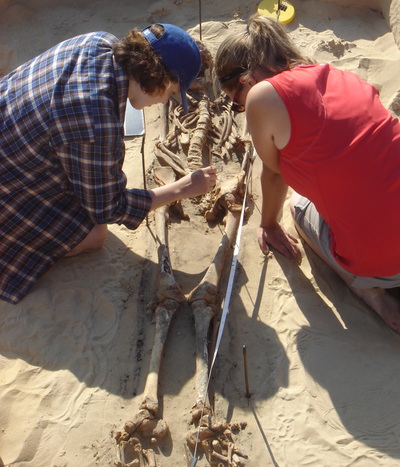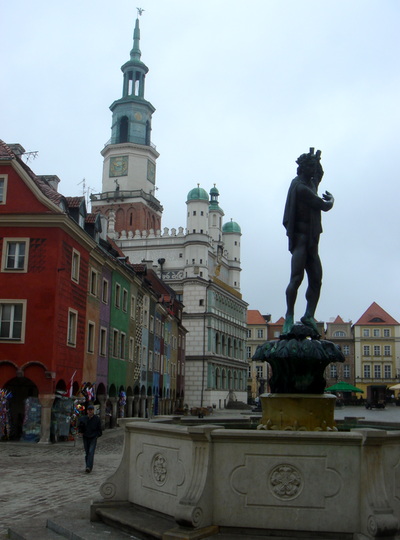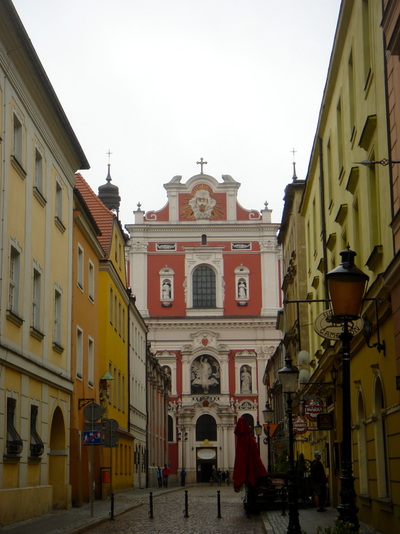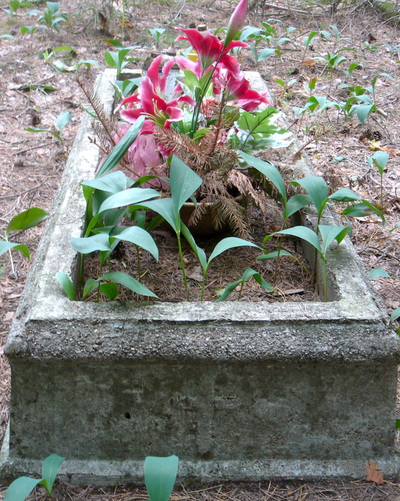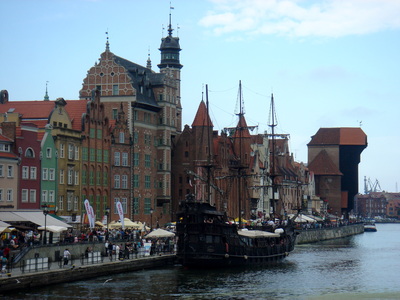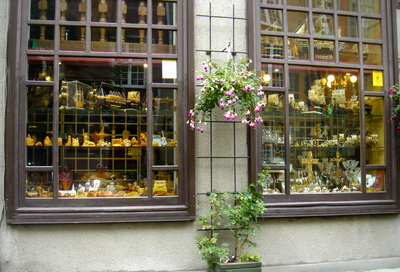*This review was written by Adam, who received his BS in Anthropology from Ohio State University. He is currently working on his MSC in Paleopathology at Durham University.
FIELD SCHOOL & WEBSITE: Field School Pozzeveri in Medieval Archaeology and Bioarchaeology
LOCATION: Badia Pozzeveri, Lucca, Italy
AFFILIATIONS: The Ohio State University, The University of Pisa
HISTORY: The excavations take place at the church of “San Pietro a Pozzeveri.” Founded in the 11th century, San Pietro was once part of a Camaldolese monastery that thrived during the 12th-13th centuries. This was due to its key location along the Via Francigena, a major trade and pilgrimage route.
CURRENT PROJECT: The 2015 field season will continue the work of previous seasons exploring the modern cemetery and medieval ruins of the site.
STAFF: The project directors include Clark Spencer Larsen, Gino Fornaciari, and Giuseppe Vercellotti. The instructors and area supervisors include Antonio Fornaciari, Francesco Coschino, Letizia Cavallini, Alessandro Cariboni, Alan Farnocchia and Silvia Testi.
LENGTH & DATES: This years field school will take place between June 22-July 31, 2015.
COST: For OSU Students/Ohio Residents, the undergraduate cost is $1,260 and the graduate cost is $2,316. For OSU Students/Non-Ohio Residents, or Non-OSU Students, the undergraduate cost is $3,230 and the graduate cost is $5,600. In addition to tuition fees, students must also pay a $1,800 support fee that will cover housing, meals, excavation, and laboratory equipment.
CREDITS: 3 credits are available through OSU. Non-OSU students may seek credit recognition through their academic institution.
APPLICATION PROCESS: Apply online at http://www.fieldschoolpozzeveri.org/apply.html
DEADLINE: June 1st, however applications are reviewed as soon as they are received. Suitable applications are accepted immediately
Tell us about your field school experience.
Overall my experience at Field School Pozzeveri was exceptional. Once accepted, I was put into contact with the Program Coordinator and began the booking process for my travels to Altopascio. I was recommended various airports to fly into (Pisa/ Florence) and reassured that upon landing a member of the staff would be there to transport students to the site. In addition, a Facebook page was created so that students could meet and coordinate travel with one another.
Upon the first day of excavation students were given an overview of the site history, previous excavation results and introduced to the staff. Students were then separated into the different excavation areas and met their individual supervisors. Each area supervisor has vast knowledge of excavation techniques and provides ample instructions for students new to archaeology and bioarchaeology. A normal excavation day runs from around 8 a.m. to 6 p.m. with an hour lunch break at the site.
Additionally students attend various lab sessions in that run in parallel with the excavation. These labs include cleaning, labeling and analyzing skeletal remains and artifacts, as well as survey and GIS recording. Lab sessions involve small groups so that students receive ample one on one attention for complete understanding of the material.
Lectures are also given once or twice a week depending on the weather. These lectures cover advances in archaeology along with various directors’ and instructors’ research.
During the weekends the field school is not in session, giving the students the opportunity to rest or travel around the surrounding area. Students are encouraged to take siteseeing trips to other cities. Altopascio is located in the heart of Tuscany so there are many beautiful places to visit and sights to see including the cities of Pisa, Florence, Lucca, Sienna and Genoa. The field school is separated into two terms with a midterm break from July 9-13 giving students additional time to travel to the further reaches of the country. A popular trip among students is visiting Pompeii or Rome.
Upon acceptance students receive a reading list that is required to be complete before arriving to the field school. The readings include information involving site history, topics in bioarchaeology, stratigraphy and GIS. There is also a midterm and a final exam to assess student’s knowledge and understanding of the readings and excavation techniques. Final grades are given based on participation in excavation (40%), lab exercises (20%), group discussions/ presentation (5%), midterm and final examination (10% each) and overall conduct throughout ones time at the field school (15%).
What skills did you learn?
The field school provides instruction in both bioarchaeological and archaeological excavation techniques. The focus is on learning proper archaeological theory and methodology in addition to some bioarchaeological excavation techniques. In the field we gained practical experience in archaeological methods including burial excavation/ documentation, restoration/ analysis of human skeletal remains, survey and artifact recovery techniques. In the lab we gained experience in mapping through GIS as well as proper skeletal data collection and restoration. The rich history of the site as well as instructors and directors who are leading researchers in their field provides an unmatched opportunity to gain hands on archaeological and bioarchaeological field and lab experience.
How were the accommodations?
The field school is located in the local elementary school. Students sleep in the gym and extra classrooms. There is a kitchen, dining and various social areas where students have full access to the facilities. There are two bathrooms (Male and Female) each with 4 separate showers. This was nice because students could get in and showered quickly and efficiently before dinner. All students are provided a cot to sleep on. Overall I would say the accommodations are great, there is plenty of space within and around the building. Another advantage of being at the local school is that you are within walking distance of the excavation site.
What are the pros and cons of this field school? Would you recommend it?
I would definitely recommend this field school to anyone interested in medieval archaeology and bioarchaeology. It is an unparalleled opportunity to get hands on excavation experience with leading research members of these fields.
Pros: The site history and archaeological experience is great. You have the chance to learn many useful methods of archaeological excavation and data recording. The labs provide further understanding and knowledge in the field as well. Over the years many extremely interesting artifacts have been found including a bell forge, gold lace (surrounding an infants head), victims of the cholera epidemic encased in lime, pottery, and various other grave goods. The staff is fantastic. They are extremely personable and truly want to provide further understanding of archaeology. There is little to no language barrier, all of the Italians speak English very well. However, I would definitely recommend learning some Italian for weekend traveling. The location of the field school itself is another pro. The Tuscany region of Italy is one of the most beautiful places in the world and I would definitely tell anyone planning to attend this field school to get out and travel as much as possible during free time.
Cons: There are really little to no cons to this field school. The main con that was brought up by students was the issue of working in areas with skeletal remains. Many students come to the field school thinking they are guaranteed that they will be excavating skeletal remains, however, this is an archaeological and bioarchaeological field school and it is clearly stated that depending on what area you are assigned you may not excavate remains. That does not mean that you will not work with skeletal remains, there are many opportunities such as lab. The lab supervisors are also always willing to accept help cleaning and cataloging remains during ones spare time.
Anything else you think readers should know about this field school?
Altopascio is a small rural town about an hour and a half from Florence. Many of the people in the area do not speak English so there will definitely be a language barrier. However most of the locals are extremely welcoming and will bring fruit and water to the site for the students. Knowing any Italian will make the townspeople that much more excited to meet you. The owner of the local pizza shop may even throw you a free drink if you order in Italian. Breakfast, lunch and dinner are all proved during the week and mostly consist of traditional Italian food. Meaning you will be eating a lot of pasta. Breakfast is usually light including a pastry and coffee at the local coffee shop/pub. Lunch is typically a sandwich or two plus fruit and something to drink (other than water). Dinner is usually the most substantial meal of the day including multiple courses. There will always be pasta or some type of carb, then a meat dish, and fruit or salad. This was more than enough food to keep me full throughout my time excavating but there is always the local grocery where you can stop and grab post excavation snacks and anything else you may need. The field school is also more than able to accommodate those with food allergies as well as vegetarians as long as staff is told of dietary issues in advance.
Overall I would say that this field school gives one a window into the Italian lifestyle of working hard, eating until you cant move and spending time with good people. It is as much a cultural experience as it is an archaeological learning experience. I would recommend anyone planning to attend the field school to be completely open to all new learning experiences and ask as many questions as you can think of. I have said it over and over that these instructors and site supervisors are leading the field and to have one on one experience with them is priceless. If you take a particular interest in something then don’t be afraid to approach and ask for further guidance and share ideas with the supervisors. This field school provides students with the one of the most well-rounded skill sets which will be essential throughout ones career.
FIELD SCHOOL & WEBSITE: Field School Pozzeveri in Medieval Archaeology and Bioarchaeology
LOCATION: Badia Pozzeveri, Lucca, Italy
AFFILIATIONS: The Ohio State University, The University of Pisa
HISTORY: The excavations take place at the church of “San Pietro a Pozzeveri.” Founded in the 11th century, San Pietro was once part of a Camaldolese monastery that thrived during the 12th-13th centuries. This was due to its key location along the Via Francigena, a major trade and pilgrimage route.
CURRENT PROJECT: The 2015 field season will continue the work of previous seasons exploring the modern cemetery and medieval ruins of the site.
STAFF: The project directors include Clark Spencer Larsen, Gino Fornaciari, and Giuseppe Vercellotti. The instructors and area supervisors include Antonio Fornaciari, Francesco Coschino, Letizia Cavallini, Alessandro Cariboni, Alan Farnocchia and Silvia Testi.
LENGTH & DATES: This years field school will take place between June 22-July 31, 2015.
COST: For OSU Students/Ohio Residents, the undergraduate cost is $1,260 and the graduate cost is $2,316. For OSU Students/Non-Ohio Residents, or Non-OSU Students, the undergraduate cost is $3,230 and the graduate cost is $5,600. In addition to tuition fees, students must also pay a $1,800 support fee that will cover housing, meals, excavation, and laboratory equipment.
CREDITS: 3 credits are available through OSU. Non-OSU students may seek credit recognition through their academic institution.
APPLICATION PROCESS: Apply online at http://www.fieldschoolpozzeveri.org/apply.html
DEADLINE: June 1st, however applications are reviewed as soon as they are received. Suitable applications are accepted immediately
Tell us about your field school experience.
Overall my experience at Field School Pozzeveri was exceptional. Once accepted, I was put into contact with the Program Coordinator and began the booking process for my travels to Altopascio. I was recommended various airports to fly into (Pisa/ Florence) and reassured that upon landing a member of the staff would be there to transport students to the site. In addition, a Facebook page was created so that students could meet and coordinate travel with one another.
Upon the first day of excavation students were given an overview of the site history, previous excavation results and introduced to the staff. Students were then separated into the different excavation areas and met their individual supervisors. Each area supervisor has vast knowledge of excavation techniques and provides ample instructions for students new to archaeology and bioarchaeology. A normal excavation day runs from around 8 a.m. to 6 p.m. with an hour lunch break at the site.
Additionally students attend various lab sessions in that run in parallel with the excavation. These labs include cleaning, labeling and analyzing skeletal remains and artifacts, as well as survey and GIS recording. Lab sessions involve small groups so that students receive ample one on one attention for complete understanding of the material.
Lectures are also given once or twice a week depending on the weather. These lectures cover advances in archaeology along with various directors’ and instructors’ research.
During the weekends the field school is not in session, giving the students the opportunity to rest or travel around the surrounding area. Students are encouraged to take siteseeing trips to other cities. Altopascio is located in the heart of Tuscany so there are many beautiful places to visit and sights to see including the cities of Pisa, Florence, Lucca, Sienna and Genoa. The field school is separated into two terms with a midterm break from July 9-13 giving students additional time to travel to the further reaches of the country. A popular trip among students is visiting Pompeii or Rome.
Upon acceptance students receive a reading list that is required to be complete before arriving to the field school. The readings include information involving site history, topics in bioarchaeology, stratigraphy and GIS. There is also a midterm and a final exam to assess student’s knowledge and understanding of the readings and excavation techniques. Final grades are given based on participation in excavation (40%), lab exercises (20%), group discussions/ presentation (5%), midterm and final examination (10% each) and overall conduct throughout ones time at the field school (15%).
What skills did you learn?
The field school provides instruction in both bioarchaeological and archaeological excavation techniques. The focus is on learning proper archaeological theory and methodology in addition to some bioarchaeological excavation techniques. In the field we gained practical experience in archaeological methods including burial excavation/ documentation, restoration/ analysis of human skeletal remains, survey and artifact recovery techniques. In the lab we gained experience in mapping through GIS as well as proper skeletal data collection and restoration. The rich history of the site as well as instructors and directors who are leading researchers in their field provides an unmatched opportunity to gain hands on archaeological and bioarchaeological field and lab experience.
How were the accommodations?
The field school is located in the local elementary school. Students sleep in the gym and extra classrooms. There is a kitchen, dining and various social areas where students have full access to the facilities. There are two bathrooms (Male and Female) each with 4 separate showers. This was nice because students could get in and showered quickly and efficiently before dinner. All students are provided a cot to sleep on. Overall I would say the accommodations are great, there is plenty of space within and around the building. Another advantage of being at the local school is that you are within walking distance of the excavation site.
What are the pros and cons of this field school? Would you recommend it?
I would definitely recommend this field school to anyone interested in medieval archaeology and bioarchaeology. It is an unparalleled opportunity to get hands on excavation experience with leading research members of these fields.
Pros: The site history and archaeological experience is great. You have the chance to learn many useful methods of archaeological excavation and data recording. The labs provide further understanding and knowledge in the field as well. Over the years many extremely interesting artifacts have been found including a bell forge, gold lace (surrounding an infants head), victims of the cholera epidemic encased in lime, pottery, and various other grave goods. The staff is fantastic. They are extremely personable and truly want to provide further understanding of archaeology. There is little to no language barrier, all of the Italians speak English very well. However, I would definitely recommend learning some Italian for weekend traveling. The location of the field school itself is another pro. The Tuscany region of Italy is one of the most beautiful places in the world and I would definitely tell anyone planning to attend this field school to get out and travel as much as possible during free time.
Cons: There are really little to no cons to this field school. The main con that was brought up by students was the issue of working in areas with skeletal remains. Many students come to the field school thinking they are guaranteed that they will be excavating skeletal remains, however, this is an archaeological and bioarchaeological field school and it is clearly stated that depending on what area you are assigned you may not excavate remains. That does not mean that you will not work with skeletal remains, there are many opportunities such as lab. The lab supervisors are also always willing to accept help cleaning and cataloging remains during ones spare time.
Anything else you think readers should know about this field school?
Altopascio is a small rural town about an hour and a half from Florence. Many of the people in the area do not speak English so there will definitely be a language barrier. However most of the locals are extremely welcoming and will bring fruit and water to the site for the students. Knowing any Italian will make the townspeople that much more excited to meet you. The owner of the local pizza shop may even throw you a free drink if you order in Italian. Breakfast, lunch and dinner are all proved during the week and mostly consist of traditional Italian food. Meaning you will be eating a lot of pasta. Breakfast is usually light including a pastry and coffee at the local coffee shop/pub. Lunch is typically a sandwich or two plus fruit and something to drink (other than water). Dinner is usually the most substantial meal of the day including multiple courses. There will always be pasta or some type of carb, then a meat dish, and fruit or salad. This was more than enough food to keep me full throughout my time excavating but there is always the local grocery where you can stop and grab post excavation snacks and anything else you may need. The field school is also more than able to accommodate those with food allergies as well as vegetarians as long as staff is told of dietary issues in advance.
Overall I would say that this field school gives one a window into the Italian lifestyle of working hard, eating until you cant move and spending time with good people. It is as much a cultural experience as it is an archaeological learning experience. I would recommend anyone planning to attend the field school to be completely open to all new learning experiences and ask as many questions as you can think of. I have said it over and over that these instructors and site supervisors are leading the field and to have one on one experience with them is priceless. If you take a particular interest in something then don’t be afraid to approach and ask for further guidance and share ideas with the supervisors. This field school provides students with the one of the most well-rounded skill sets which will be essential throughout ones career.
